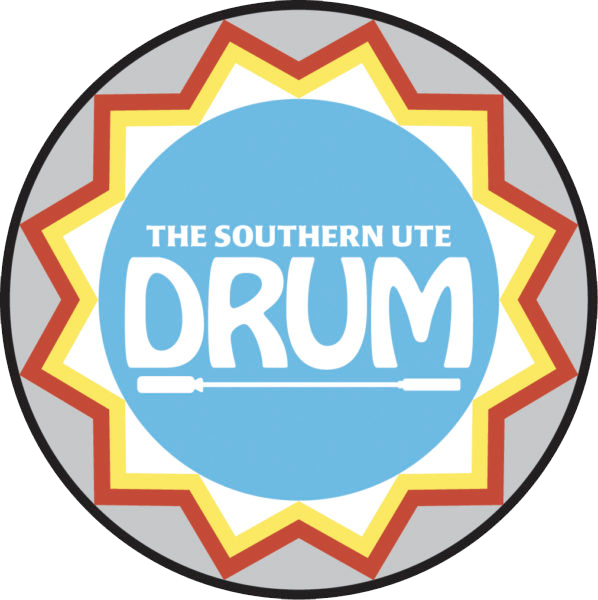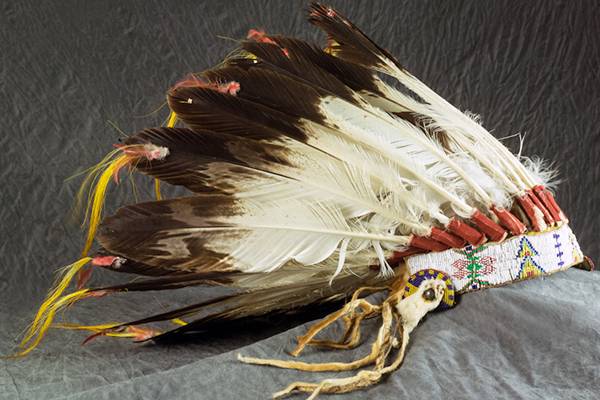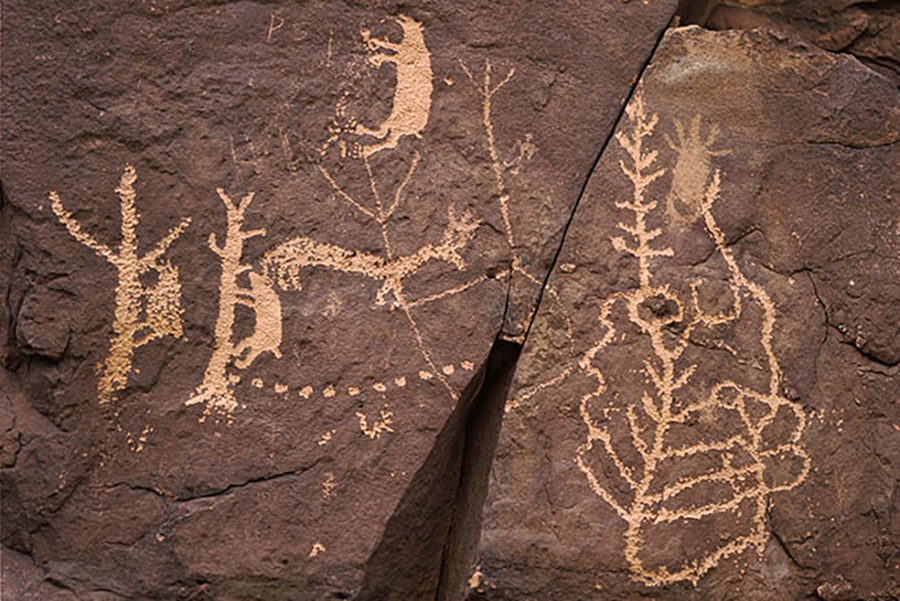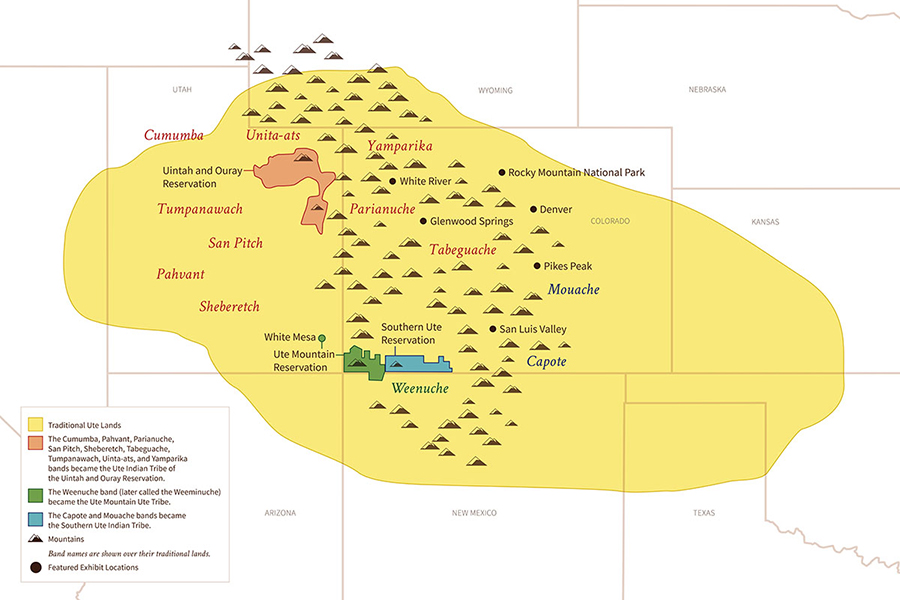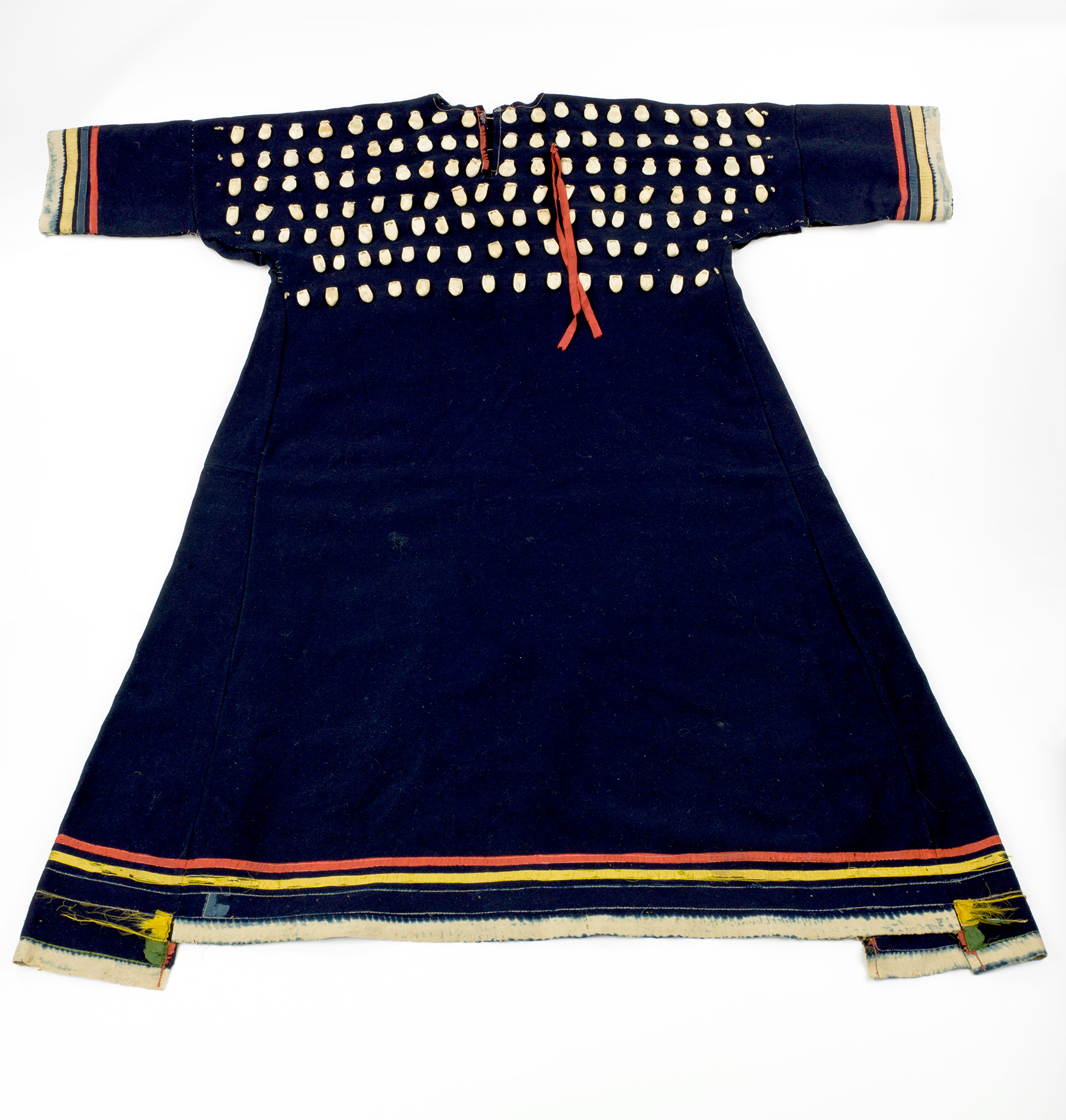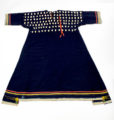Expanding the understanding, history and voices of Ute tribes
In collaboration with the Southern Ute Indian Tribe, the Ute Mountain Ute Tribe, and Ute Indian Tribe of the Uintah and Ouray Reservation, History Colorado will open the exhibition Written on the Land: Ute Voices, Ute History on Dec. 8, 2018, at the History Colorado Center in Denver. The exhibit is well-timed to share stories that generate new knowledge and perspectives of the Ute people, Colorado’s longest-continuous residents, and their role in Colorado culture – knowledge that will inform both new and longtime residents while bridging Ute history with modern-day Colorado.
Written on the Land was created with input and guidance from more than 30 tribal representatives, who participated in many multi-day meetings to help develop the content. According to Shannon Voirol, director of exhibit planning at History Colorado and lead developer of the exhibit, “We wanted the stories to be told from the voices of the Ute tribe members, so these conversations were critical for creating meaningful, relevant content. After all, they are the storytellers.”
The exhibit’s planning period spanned four years for meeting with tribal representatives; creating the space; collecting contemporary artifacts from tribes; gathering and interpreting stories from tribes; and expanding on the stories from History Colorado’s Ute Indian Museum in Montrose, Colo. Written on the Land will be a long-term exhibit at the History Colorado Center, responding to ongoing requests from visitors and educators for more American Indian history and exhibits.
“This exhibit is just a small part, a sliver, of the story of the Ute people. There will always be so much more to learn and understand about our traditions and our future, especially how and why we did what we did in Ute culture in order to survive,” shared Alden Naranjo, retired Native American Graves Protection and Repatriation Act (NAGPRA) coordinator and Southern Ute tribal historian, who participated in the planning meetings for the exhibit.
In comparison to other American Indian exhibits that only focus on the past, Written on the Land brings history to the present and talks about what contemporary lives look like for Ute tribal members. The comprehensive exhibit will connect time periods through a mix of historic and contemporary artifacts, photographs and artwork and cutting-edge digital experiences – honoring the tribes that help make up Colorado’s ethnicity and influence U.S. history, both past and present.
“This exhibit presents authentic Ute voices and perspectives that have not always had a place in the dominant narrative, and in doing so it moves us closer to ensuring that Colorado’s story is, in fact, our shared history,” said Jason Hanson, chief creative officer and director of interpretation and research at History Colorado. “In sharing the Ute people’s stories, we’re setting the groundwork to form new relationships and have mutual appreciation for other groups to share their viewpoints and experiences with us.”
About the Written on the Land Exhibit
Museum visitors will take a journey through iconic Colorado places where the Ute people have resided for generations, to deepen their understanding of the home we share. Written on the Land will feature more than 150 artifacts from History Colorado’s world-class collection, including Ute beadwork, clothing, basketry and contemporary craft. On view will be the colorful beadwork that adorns dresses, moccasins, bags and jewelry, along with willow baskets, stone tools and wooden saddles Ute people used as they moved through the Rocky Mountains with the seasons. Visitors will hear elders tell the traditional stories of the Bear Dance and see beaded gloves, fringed shawls and carved instruments used in the Bear Dance today.
The National Science Foundation awarded a five-year grant to History Colorado in 2016, enabling History Colorado and Ute tribes to expand these stories and to collect research and data. This grant has provided funding for cutting-edge archaeological fieldwork with Ute elders and youth. These new findings will be featured as interactive spaces in the exhibit and will provide an opportunity for museum visitors to learn more about the use of plants and the ethnobotanical knowledge of the Utes.
In addition, the National Science Foundation grant is supporting a statewide science, technology, engineering and math (STEM) education program for schools and Ute tribes. The program will enable anthropologists, botanists, scientists and researchers to connect with students and educators across Colorado and bridge their scientific knowledge with the traditional ecological practices of indigenous peoples.
Written on the Land is included in the cost of a general admission ticket: $14 adults, $12 seniors 65+, $10 for students with ID, $8 children 5-15; children 4 and under are free. For complete information, visit HistoryColorado.org. The History Colorado Center is located at 1200 N. Broadway, Denver.
About History Colorado
History Colorado’s mission is to create a better future for Colorado by inspiring wonder in our past. We serve as the state’s memory, preserving the places, stories and material culture of Colorado through the History Colorado Center and statewide Community Museums, educational programs, historic preservation grants, research library, collections and outreach to Colorado communities. Visit HistoryColorado.org, or call 303-HISTORY, for more information.
